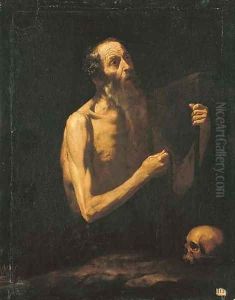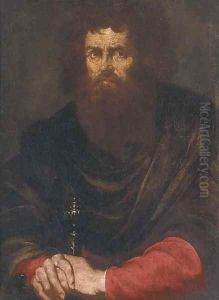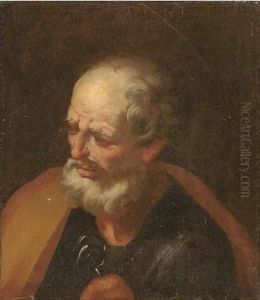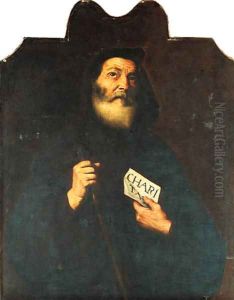Jusepe De Ribera, Lo Spagnoletto Paintings
Jusepe de Ribera, also known as José de Ribera and by his nickname 'Lo Spagnoletto' (meaning 'the Little Spaniard'), was a Spanish painter and printmaker, noted for his dramatic realism and his depictions of religious and mythological subjects. Born on January 12, 1591, in Játiva, near Valencia in Spain, Ribera is often associated with the Spanish school of painting, although he spent most of his career in Italy.
Ribera moved to Italy around 1606, settling first in Parma and then in Rome, where he was influenced by the work of Caravaggio and his followers. The young artist was drawn to Caravaggio's use of chiaroscuro and his realistic approach to the human figure and emotion. In Rome, Ribera began to develop his own style, characterized by a strong use of light and shadow, a profound sense of drama, and a striking attention to detail.
Around 1616, Ribera left Rome for Naples, which at the time was a Spanish possession and a major artistic center. He would spend the rest of his life in Naples, becoming a leading painter in the city and influencing the development of Neapolitan art. Ribera's work was in high demand, and he received commissions from many important patrons, including religious institutions and members of the Spanish viceregal court.
Ribera's paintings are often marked by a sense of physical and emotional intensity. His subjects, whether drawn from the Bible, hagiography, or mythology, are typically depicted in moments of passion or suffering. Ribera's religious works, such as his depictions of saints and martyrs, often highlight the stark reality of pain and devotion, while his mythological scenes, such as those of the punishment of Tityus or the flaying of Marsyas, exhibit a raw and sometimes disturbing power.
In addition to his paintings, Ribera was also an accomplished printmaker, and his etchings helped disseminate his dramatic style throughout Europe. Despite his nickname, 'Lo Spagnoletto', which was a reference to his Spanish origin and diminutive stature, Ribera was a towering figure in the Baroque art of the seventeenth century. His influence can be seen in the works of later artists, particularly in the Neapolitan school.
Ribera died on September 2, 1652, in Naples. His legacy lived on, not only in the works of his followers in Italy but also through the admiration of Spanish artists from later generations, such as Francisco de Goya. Today, Ribera is recognized as a master of the Baroque era, whose works continue to be studied for their emotional depth, technical prowess, and powerful visual storytelling.



